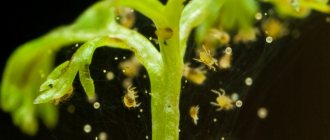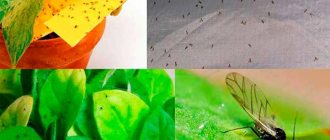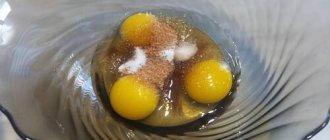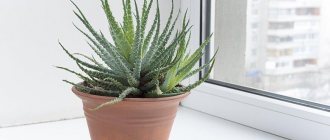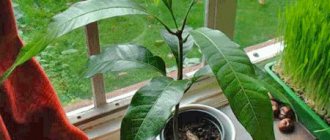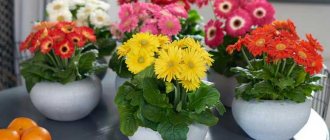Self-watering for indoor plants has earned high praise among gardeners, for whom long periods of absence from home are a common occurrence. Regular business trips, long vacations or being overly busy - there are many reasons to skip watering flowers, but now this will not be an acute problem. In each case, an automatic watering system for indoor plants will come to the rescue.
You can organize automatic watering yourself or purchase it ready-made. The choice of one or another option depends on several factors: how much money the owner of indoor plants is willing to spend on arranging automatic watering, whether he has time to make the system with his own hands, how many indoor plants are in the room. Familiarization with the various options for an automatic watering system will help you decide whether to choose a homemade technology or turn to factory-made products.
A simple solution to the problem
If long absences are not a system and the problem of watering in the absence of the owner arises infrequently, you can resort to the most budget-friendly method of preserving moisture in indoor plants. For this you will need:
- Moisten the soil in the pots generously.
- Remove plants from sunny areas and move them to a shaded area. This measure will reduce moisture evaporation. It should be noted that the proposed method is not suitable for all indoor pets. If certain species simply slow down their development, the condition of light-loving plants may deteriorate significantly.
- Preliminary removal of buds, blossoming flowers and dried foliage will help reduce moisture consumption.
- The pots are collected in a large container - a basin, trough or bath. The bottom of the container is covered 5 cm with a layer of expanded clay, after which it is filled with water. If possible, wet pieces of sphagnum moss are distributed between pots with indoor plants. The entire set is covered with film.
Comment!
Greenhouse conditions are not suitable for indoor plants with pubescent leaves, which will begin to rot if there is a lack of fresh air flow. Upon arrival home, you should gradually return the flowers to their usual conditions and accustom them to open space. The proposed option of automatic watering has a lot of disadvantages, so it is better to resort to improved systems for automatic watering of indoor plants, which are easy to build with your own hands or install ready-made structures.
What it is
Automatic watering is a special system that automatically irrigates the soil surface.
Atowatering is an effective way to care for plants, however, it can be used independently for no more than 14 days. After which you will need to add water or clean the structure.
For long business trips, automatic watering can be connected to the sewer system. This will ensure the plants have constant access to moisture.
Operating principle
Each element of the system plays its role:
- The controller is the “brain” of the design; it is the one that monitors the auto-irrigation timer, supplies water when needed and controls its level.
- Storage tank – heats water to the desired temperature.
- Pipeline - through it water enters the soil.
- The pump supplies it to the system.
- A sprinkler and a dripper are what water the plants. Depending on the settings, water is supplied in small or large drops.
The controller plays an important role in the automatic watering system. It is he who determines when the soil needs irrigation.
The need for automatic watering for indoor plants
Many plants can live without water for about three weeks. Here everything depends on weather conditions, soil structure, etc. It is difficult to imagine how a plant will behave in a drought, therefore, it is better to play it safe and build automatic watering for indoor plants. He irrigates the land strictly as needed.
Automatic watering is a convenient system that provides the level of moisture necessary for plant growth. Everything is produced according to the specified parameters, so there is no need to be afraid that too much or little moisture will be supplied.
Advantages and disadvantages
The advantages of such a system are:
- rational water consumption - the system itself analyzes how much moisture is needed for the soil;
- convenient - you don’t need to constantly walk around with buckets, the system itself will take care of each plant;
- improving the condition of the soil - with this irrigation option, water is consumed as much as necessary. A person pours “by eye”, which negatively affects the roots of plants, as well as their subsequent flowering and fruiting;
- easy installation of the system and maintenance of it - you can create the structure yourself.
Among the disadvantages is the high cost of purchased automatic watering systems, especially if several such systems are required. However, this minus is compensated by reduced water consumption.
Drip irrigation
Automatic drip irrigation is a great idea for indoor pets, which migrated from greenhouses and open areas of the garden. The method is characterized by simplicity, low cost and reliability. The operating principle is as follows:
- The basis of the automatic watering system is a plastic bottle.
- Several small holes are pierced on the lid.
- The bottle is filled with water, the neck is closed with a mesh or gauze folded in several layers, and the lid is screwed on.
- The container is lowered into a pot with a houseplant with its neck down and fixed in this position.
The volume of water containers for automatic watering is selected taking into account the size of the container. If the container with indoor plants is large, you may need 2-3 bottles. A better flow of water will be ensured by a cut bottom when the plastic container turns into a kind of funnel.
Watering indoor flowers during the holidays: affordable and effective
- After abundant watering, indoor plants are placed in a large container (basin, baby bath).
- Pour water (2-3 cm) into the bottom and pour wet expanded clay (8-12 cm) onto the bottom and sides of the flower pots.
- The trays must be removed from the pots. Therefore, the pots should not come into contact with water, otherwise the roots may freeze; they must be placed on a layer of expanded clay above the water.
- The only possible disadvantage of this method is that if at least one plant is already affected by a pest, then they can easily move on to the rest.
- This method is especially suitable for plants in clay and ceramic pots.
GAIN. This method can be strengthened by adding a layer of moss to the top layer of the soil mixture, this is especially important for plants in plastic pots.
Clay and ceramic pots can also be placed inside plastic ones, and the space between them can be filled with damp expanded clay or moss.
This method allows most plants (depending on the time of year, type, condition, size and development phase of the plant) to last from 6-7 to 14-20 days without watering.
- For maximum effect, it is recommended to supplement this method with wick or drip irrigation (plastic bottle).
System "Wick"
It is not much more difficult to organize automatic watering for indoor plants with your own hands using wicks. In this case, moisture enters through cords, one end of which is immersed in a container of water, and the other is in the soil with a houseplant. If the rope enters the pot from above, it is recommended to secure it with a hairpin or peg. Another way of designing automatic watering is possible, when the cord is inserted into the container with the flower from below through the drainage hole. This procedure is carried out in advance, at the stage of planting flowers. All the grower needs to do is periodically fill the tank with water.
Attention! Automatic watering from below is recommended for indoor plants that prefer a light substrate.
If, in addition to automatic watering, the usual method of irrigating flowers will be used, the containers must be equipped with a drainage layer. When using exclusively wick automatic watering, organized from below, you can do without drainage. Wick irrigation is made using synthetic cords; ropes made from natural threads should be abandoned. The reason is the rapid deterioration of the wick, which, with regular interaction with water, will soon rot and break.
Wick automatic watering of indoor plants needs adjustment. Simple laws of physics apply here: the higher the container of water is relative to the flower in the pot, the faster the moisture will seep into the soil. Therefore, before a long departure, it is better to adjust in advance the amount of moisture that indoor plants will receive.
Automatic watering systems for indoor plants
An automatic watering system for indoor plants and flowers has a number of outstanding advantages. The automatic watering system allows you to provide indoor plants and flowers with moisture for a very long time.
Every year, automatic watering of plants is becoming increasingly popular; devices are produced by many well-known companies (Brigadier Werkzeuge (Switzerland), Weninger (Austria), Gardena (Germany), Hozelock (UK), Uniflex (Italy)).
Automatic watering systems differ in the type of power supply (solar, electricity, battery), the number of plants watered (from one to several dozen), the method of water intake (pipeline, water container), the method of water supply (pump or gravity), and watering settings in the timer .
Automatic plant watering system
The price of an automatic watering system for indoor plants depends on the system configuration and manufacturer.
Popular articles The roots of an orchid have rotted: how to revive the plant?
Do-it-yourself automatic drip watering of indoor plants
Automatic watering of indoor plants is quite simple and easy to do yourself using available materials. Drip watering for home flowers is made from a medical dropper system, which can be purchased at a pharmacy.
The system has a built-in regulator that allows you to adjust the frequency of liquid dripping down to the second.
As with wick watering, a container of water (bucket, basin) is placed above the plant, one at the end in the pot, and the other in the container. After installing the automatic watering system (dripper), we begin to adjust the drip frequency.
After a couple of hours and every morning for several days, we check the functionality of the drip irrigation system. If everything is in order, then you can safely go on vacation and enjoy all the delights of a vacation!
An example of a homemade drip irrigation system
We hope that now watering indoor flowers during vacation will no longer be a problem, just as you already know how to water indoor plants in the event of a long absence.
And drip and automatic watering systems for indoor plants will serve you well and preserve the beauty of your home flowers.
ADDITIONS TO THE ARTICLE:
We wish you a great holiday and a lot of positive emotions!
If a person decides to leave home for a while, the question arises about caring for house plants. You can ask your friends about this, but no one will give guarantees that the care will be carried out in good faith. There are several ways to preserve flowers without resorting to outside help or complex purchasing mechanisms. However, they can only be considered as a temporary measure. If there is no timely watering all the time, then you should look for another solution.
Medical droppers are great helpers
Another simple option for arranging automatic watering is to use medical droppers. The principle is identical to wick automatic watering. Basic steps:
- Prepare systems (drippers) according to the number of containers with indoor plants.
- Simply blowing through the tubes will help make sure there are no cracks.
- On one side, all the droppers are collected into a single bundle, but are not pinched, a weighting agent is attached, and the entire structure is lowered into a reservoir of water.
- The second end is connected to a container with a houseplant.
- The container with water must be located above the flowers; its volume depends on the number of outgoing tubes and the plants’ need for irrigation.
- When the entire automatic watering system is assembled, the droppers open. Usually a slow mode is set to avoid oversaturation of the substrate with moisture.
For craftsmen familiar with the basics of electronics, it will be interesting to build an automatic watering system using an arduino controller. In this case, the container intended for the indoor plant will be simultaneously equipped with several controllers, which include:
- soil moisture control;
- dispenser;
- liquid level indicator.
Of course, not everyone is familiar with the basics of diagramming and programming. Therefore, if you want to make it easier to care for indoor plants, it is better to turn to ready-made analogues of the “smart pot”, which will be discussed separately.
How to make a device with your own hands
It is not necessary to buy automatic devices for sprinkling flowers, since drip irrigation for indoor plants can be done with your own hands. It will not take much time and effort, and its effectiveness is no less than that of automated devices.
How to make a device from medical droppers
A drip irrigation system from medical droppers for home flowers is very simple to make. To construct the system, you will need one dropper per pot that requires moisture. Among other things, you will need a plastic water container with a volume of 5-7 liters. It depends on the number of pots.
Note! The more flower pots you need to irrigate, the larger the container should be used for liquid
- After purchase, each dropper must be checked for suitability by blowing.
- Pour the required amount of liquid into the container and place it above the level of the flower pots.
- Tie the IV tubes loosely together without squeezing them.
- Weight the tubular system so that the tips of the droppers do not float in the water.
- Place a structure of fastened tips into a container with water, and place the other tips of the tubes in each pot.
- Adjust the irrigation speed using the screw clamps on the tubes.
Drip irrigation from a plastic bottle
For this purpose you will need a plastic bottle with a cap and a pocket knife.
- A hole is made in the lid through which liquid will ooze.
- The cap is screwed onto the neck of the bottle.
- The bottom of the container is cut off and inserted neck down into the ground.
- Liquid is poured into the container.
Popular articles Spring replanting of indoor flowers
Periodically it is necessary to add water, fill the structure, and monitor the speed of watering: if the water leaves too quickly, it is worth changing the size of the hole in the lid.
"Wick" from a plastic bottle
It is also possible to make a “wick” watering system from a bottle. For this you will need:
- lace or any synthetic material from which the wick will be twisted;
- plastic bottle;
- a peg for fixing the wick in a flowerpot.
What to do:
- A wick is twisted from available synthetic material.
- Water is poured into the bottom cut off from the bottle.
- The tip of the twisted cord is immersed in the liquid.
- The other tip is fixed in a flower pot.
- A container of water is placed under the plant.
It is enough to make one of the devices and test it on house plants to appreciate the convenience of this approach.
Granulated clay or hydrogel
There are many ways to provide automatic watering for a houseplant during a long absence. At retail outlets that sell indoor flowers, you can purchase special granular clay or hydrogel. These products will cope with the task of maintaining soil moisture at the required level by quickly absorbing water and gradually releasing it to indoor plants.
Basic actions:
- Select a capacious container into which a layer of the selected product is poured.
- A plant is placed on top, the root system of which remains in an earthen coma.
- The space between the soil and the walls of the container is filled with the remains of a special clay or hydrogel, after which the surface is covered with plastic film.
This method of automatic watering of indoor flowers is effective for a long time. The advantage of the solution is that the indoor plant does not undergo a replanting procedure, which sometimes negatively affects further growth and causes disease. If the absorbents begin to dry out, add water to the hydrogel or clay pot as needed.
A colorful example of automatic watering using hydrogel is shown in the photo:
Use hydrogel
A hydrogel is a polymer that can absorb water in very large quantities and then slowly release it to plants. It is sold in granules. The polymer is soft and transparent; it quickly absorbs water, designed to be added to the soil. Indoor plants planted in a substrate with hydrogel are rarely watered. It’s enough to water the flowers well before going on vacation, and you won’t have to worry for a week, or even two. The plants will not rot or dry out. Minus: the plants must be planted in advance in such soil. You can also use decorative Chinese hydrogel in the form of colored balls. Pre-wet the granules for 6-8 hours. When it swells, pour a layer of substrate into the pots and cover the top with moss. The balls will gradually release moisture into the soil. If the plants have a non-surface root system, then you can mix the top layer of soil with hydrogel beads.
Capillary mats
Another way to organize an automatic watering system for indoor plants is to use capillary mats. This practical device is a special mat, the production of which uses materials with high hygroscopicity. The operating principle is extremely simple:
- Indoor plants in containers with drainage holes at the bottom are placed on a capillary mat.
- One edge of the mat is immersed in water.
Advice! It is better to choose kits that additionally include two pallets. - In this case, water is poured into a large pan.
- A smaller container with holes in the bottom is placed inside.
- A capillary mat is laid on top, on which indoor plants are installed.
Naturally, as water is absorbed, it is added to the outer container. Manufacturers claim a two-week ability of capillary mats to provide indoor plants with automatic watering.
How to water flowers during vacation or business trip
In this case, a micro-drip automatic watering system, a flowerpot or a ceramic cone will be suitable. It is necessary to prepare for their arrangement in advance and check the system for correct operation. It is important that moisture is supplied as needed to prevent overdrying or waterlogging, which is detrimental to plants.
Top 5 ready-made systems (manufacturers)
Among the most well-known systems for automatic watering of plants are:
- Bug - .
- Water strider - from .
- A drop - .
- The harvest is from Tuboflex.
- The source is production.
Each of the systems operates on the basis of a drip tape (Bug, Drop, Harvest and Source) or a tube (Water Strider). For irrigation, a container of water or a pipeline (well) is used.
There are many ways to automatically water plants that will provide them with the necessary level of moisture. Each of them has its own characteristics and operating rules. Before purchasing or constructing a system, it is necessary to determine exactly which one is suitable for a given type of plant.
Cones and jars
One of the easiest ways to auto-water indoor plants with your own hands is to purchase a special pear with a stem. There are many original varieties of simple things - birds, balls, frogs, snails, painted in bright colors, will organically fit into the interior with indoor plants. The products are made of plastic, and the automatic watering system operates extremely simply: before leaving for a long time, the container is filled with water and inserted into a pot with an indoor flower.
As the soil dries, air penetrates the stem and pushes out liquid, which moisturizes the substrate and root system of the plant. Opinions about the practicality of such automatic watering among gardeners are divided. Some claim a dosed supply of moisture, others complain about problems with waterlogging of the soil with indoor plants. Everyone makes their own decision about the advisability of using it, but as a temporary measure, this is a completely suitable option. If systematic automatic watering is necessary, it is better to avoid such a product.
Occasionally, automatic watering is arranged according to the principle of a drinking bowl for poultry. In this case, the container with the indoor plant is placed in a deep tray, where a jar of water is placed upside down, with holes in the lid. As needed, water flows through the drainage holes at the bottom of the pot to the roots of the indoor plant. But the proposed system requires adjustment so that the moisture is distributed in the right amount, does not pour out of the jar instantly, or vice versa, does not leave the indoor plant without water.
Comment! Regardless of the chosen automatic watering method, it should be tested in advance before departure. You should not rely on the uninterrupted functioning of the automatic watering system in your absence, so as not to destroy your indoor plants.
Do-it-yourself capillary irrigation, watering on fabric
An automatic watering system can be organized using a glass jar and terry cloth. Place a damp, wrung-out towel at the bottom of the tray. Place pots of flowers on it.
Pour water into a glass jar, close it with a lid with a small hole made (10 - 15 mm). A 3-liter bottle with a nylon sealed lid is suitable. In my photo - a half-liter with a regular screw cap. Cover the hole with your finger, turn the jar over and place it upside down there, on this terry towel. You will see air bubbles rushing upward. Water will seep out little by little from the hole in the lid.
Turn the jar of water over and place it on a towel next to the flowers.
Once the towel is sufficiently damp, air will stop flowing into the jar and water will stop flowing out.
Check: Wring out the towel and place the jar of water back on it. Air bubbles will appear and the process will repeat, which means the automatic watering system is working. (Without a towel, water will not flow out of the jar.)
How much water will flow to the plants depends on the type of pots and drainage (see above - watering with a bottle), as well as the thickness of the towel. It’s worth checking 10 days before your vacation to see how this automatic watering system will work.
Capillary mat
The towel with the jar can be replaced with a purchased capillary mat for watering seedlings. The mat is pre-impregnated with water and pots of flowers are placed on top of it; a jar is not needed here. One square meter of capillary mat absorbs about three liters of water. The mat is covered with a film with many holes to reduce water evaporation and to prevent roots from growing from the pots into the mat.
Getting ready to leave for a few days, I made a capillary mat for seedlings with my own hands . Place a piece of terry towel on the bottom of the tray. I covered it on top with a thin film with holes. (Without film, the roots grow into the fabric.) I installed watered pots with seedlings.
I folded thin cling film in several layers and made many holes, at least one for every square centimeter. She carefully unfolded it and laid it on top of the towel.
Now more details. The pallets were installed strictly horizontally, without tilting, so that the water did not flow to one side. Before laying, I moistened the towel from a measuring cup. (In order to know how much water it absorbs without forming a “swamp” in the pan.) I took pots with drainage holes at two levels: on the ledges and in the depressions of the bottom: the roots need not only water, but also air. A thick towel should not be folded in several layers, so as not to block air access to all holes.
I placed a damp towel at the bottom of the tray, covered it with a film with small holes and placed pots with watered seedlings.
I watched the plants for several days. I decided to add a layer of fabric, since the towel was thin and there was not enough water for 5 days. Before leaving, I watered the seedlings from above into the pots, poured measured amounts of water into the tray, distributing them in different places. The method works if all conditions are met.
Ready-made systems
When you don’t want to design your own automatic watering system, you can resort to ready-made technologies. There are several options for automatic watering offered by the retail chain. Most popular:
- microdroplet systems;
- flower pots with automatic watering;
- ceramic cones.
The products differ significantly in cost, so everyone can choose the right solution for their own wallet, taking into account the number of indoor plants and the duration of use.
Microdrip auto-irrigation systems
Owners of impressive collections of indoor plants should take a closer look at the micro-drip auto-irrigation system, which is a smaller copy of structures designed for irrigating vegetation in greenhouses or in the garden. Operation occurs through connection to the central water supply. The built-in electronic timer provides automatic watering by supplying and turning off water at a pre-programmed time. If desired, a soil moisture sensor can be purchased additionally. With such an automatic watering system, you won’t have to worry about your indoor plants during a long business trip or vacation.
Comment! When installing a micro-drip auto-irrigation system, which depends on a centralized water supply, it is not possible to shut off the water supply in case of departure.
If the collection contains no more than 30 pots with medium-sized indoor plants, pay attention to the micro-drip automatic watering system, which is equipped with a reservoir. Tubes with droppers at the end extend from a container of water to each specimen of the flower collection. Droppers come in a simple plastic design or have a ceramic tip that is fixed in the soil with a houseplant.
The intensity of automatic watering with a conventional dripper is adjusted manually using a special wheel. Automatic watering systems equipped with a ceramic tip are more practical. The presence of soil moisture sensors ensures automatic adjustment of water supply or stop for indoor plants.
An example of a micro-drip auto-watering system for indoor plants is shown in the photo:
Pots with automatic watering
Modern technologies have penetrated into all spheres of human activity; a striking example is a “smart pot” or a flowerpot with automatic watering, a wide range of which is represented by the Lechuza brand. The product is a set of two containers: the inner one contains indoor plants, the outer one contains water, which flows to the root system through special wicks.
Usually the pot is equipped with a water indicator, so monitoring the liquid level and the need for topping up is not difficult. A pot with automatic watering can be purchased for plants of any size, from compact violets to a chic branched ficus. The Lechuza catalog offers standard versions. Set includes:
- external planter;
- container for a houseplant;
- water tank;
- humidity level indicator;
- buffer layer.
The assembly procedure is quite simple. After planting, it will take 3 months for the roots of the plant to reach the bottom and be able to independently provide themselves with moisture. If necessary, you can purchase tall flower pots, where the insert container makes it possible not to fill the container with substrate to its full depth.
The smallest sizes of self-watering pots are 10-13 cm; such models are in demand in offices for placement on the desktop. For indoor plants of impressive size, it is worth taking a closer look at the Cubico collection, which is intended for use on the floor. All self-watering pots are lightweight.
Attention! Large models are equipped with a stand with wheels that can support weights up to 180 kg.
This element is extremely convenient when it is necessary to relocate a houseplant. Thanks to the presence of recesses at the bottom of the pot, the structure with wheels fits firmly and is securely hidden under the flowerpot.
Setting up the automatic watering system is quite simple. The algorithm of actions includes the following steps:
- The bottom of the self-watering pot is first filled with a special Pon substrate, which perfectly doses the moisture supply.
- Part of the soil mixture suitable for the given indoor plant is filled in.
- The plant itself is planted.
- The remaining volume of the container is filled with the remaining soil.
- For 12 weeks, the pet is watered in the usual way so that the roots reach the bottom.
- After the allotted time, the tank is filled with water, after which you can completely switch to the automatic watering system.
- Manufacturers claim the ability of self-watering flowerpots to maintain the desired level of humidity in an indoor flower for 3 months, but it doesn’t hurt to periodically check the water level indicator.
A pot with self-watering has a wonderful feature: it can be placed not only indoors, but also placed outdoors. The plastic from which the pot is made is resistant to UV radiation, mechanical stress and is not afraid of low temperatures. The bottom of the housing contains a drain hole closed with a plug. When using a pot with automatic watering outdoors, the plug is removed. This measure will prevent the risk of waterlogging of the soil with the indoor plant during natural precipitation. Excess rainwater will flow out freely.
Another advantage is the replaceable internal block with handles. This design allows you to easily replant plants or form a root system.
Ceramic cones
Much easier to use, and correspondingly lower in cost, is a device for automatic watering in the shape of a ceramic cone. These unique “carrots” with plastic tubes are gaining more and more popularity among indoor plant lovers. A ceramic cone, designed for automatic watering, is buried in the soil, the other end is lowered into a reservoir of water.
In principle, this is an improved drip irrigation system using medical droppers, which was described above. An advantage of the solution when purchasing a finished product is that there is no need to regularly monitor the water supply. The process of automatic watering occurs due to the independent supply of liquid during the period when the soil of indoor plants dries out.
It is impossible to clearly judge the practicality of such an autopolishing technique. Manufacturers claim uninterrupted operation of the system; the only condition is to fill the tank with water in a timely manner. Lovers of indoor flowers are not always satisfied. From time to time, situations arise when the cone becomes clogged and automatic watering of plants stops, that is, control over the process is still necessary. The solution to preventing blockage will be to move the water tank to a higher place, then you will have to ensure that there is no excess moisture in the soil with the indoor plant. In a word, the problems are the same as with a DIY watering system for indoor plants.
If there are few indoor plants and there is no space for a tank, a ceramic cone is placed on a plastic bottle, which is fixed directly in the pot. As a temporary measure, this is a completely suitable solution for automatic watering.
Kinds
Artificial soil irrigation systems are divided into three groups:
- Automatic - the quantity and frequency of watering is set according to a schedule.
- Manual - turning on and watering is controlled by a person.
- Combined - automatic watering can be carried out both by a person and automatically.
To understand the principle of operation, it is worth taking a closer look at each type.
Drip irrigation
The basis of this design is a plastic bottle, in the lid of which several holes are pierced, after which they are filled with water. Then, gauze is put on the neck and the lid is screwed on. The structure is turned over and installed in a pot.
The size of the holes is selected based on the plants' water needs.
Wick watering
To build such a structure, you will need a product from which you can make a wick. It must be made of synthetic materials; natural threads are not suitable, since when exposed to moisture they quickly rot and become unusable.
For the design to start working, one end of the wick is immersed in liquid, and the other in a flower pot. To ensure reliable fastening of the cord, it is necessary to use special pins.
To ensure the required level of moisture, the system needs to be adjusted. This is easy to do so that moisture gets into the soil faster; the container is placed above the pot with the plant.
Automatic watering from a medical dropper
This is a type of drip system, the main elements of which are droppers, stand, tube, filter and fasteners. There are several types of design:
- collapsible – used for irrigation;
- adjustable system;
- collapsible and non-compensated - for irrigation watering;
- knitting needle – L-shaped, used for micro-irrigation;
- straight spoke - watering is carried out through tubes.
Often such a structure can be built with your own hands. Its advantage is that it is suitable for automatic watering of a large number of pots with plants; it is also possible to regulate the moisture supply using the regulator on the dripper.
Granulated clay or hydrogel
Granular soil for plants is a very convenient option that maintains the moisture level necessary for growth. The granules quickly absorb moisture and release it evenly.
Principle of operation:
- The required amount of granules is filled with water.
- When they swell, they are poured into a pot.
- The flower is transplanted from above along with a lump of earth, and sprinkled with the remaining granules.
- Water is added as the soil dries out.
There is no need to pour too much water into the hydrogel granules, just moisten them a little.
Capillary mats
The system works using special mats soaked in water. They operate as follows: holes are made at the bottom of the pots, then they are installed on a capillary mat, which provides the required level of moisture.
To saturate the mat with moisture, one end of it is immersed in a container of water. You can choose another method, which will require two pallets of different sizes. Liquid is poured into the larger one, and a smaller tray with holes in the bottom is immersed in it, and a mat is laid on top, on which the pots are placed.
Cones and jars
This method performs two functions at once: automatic watering and decoration. Bright jars and cones look very beautiful in a pot with plants, however, they are suitable for short-term use, as they have a small volume. The method works as follows: when the earth needs moisture, dry air pushes water out of the container. The advantages of the system are ease of use, absence of bulky structures and interior decoration.
Pots with automatic watering
In smart flowerpots, the automatic watering system consists of two connected parts:
- internal - the plant is placed in it;
- external - filled with liquid.
There are different designs on sale, the volume of which depends on the size of the flowers. There is an indicator to regulate the moisture level.
Automatic watering for flowers has many advantages. It is equipped with special blocks with handles, thanks to which the plant can be easily replanted.
Ceramic cone
To construct such a structure, a clay cone is used, which is made in the form of decorative elements (gnome, water lily, etc.).
The distinctive qualities of this system from drippers are that they are purchased ready-made and there is no need to control the water supply. Automatic watering of indoor plants occurs when the soil becomes dry.
To ensure proper operation of the system, it is necessary to fill the reservoir with water in a timely manner.
